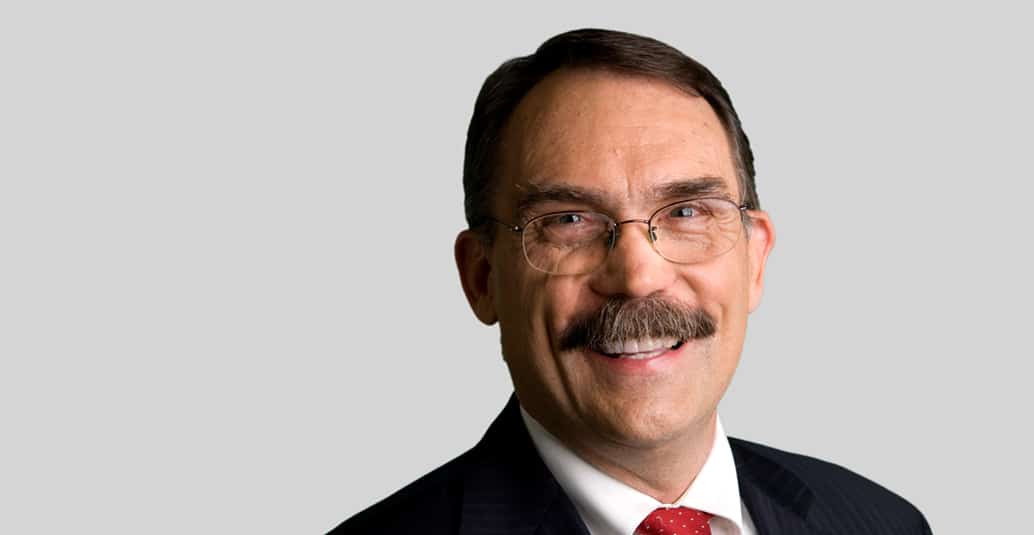pv magazine, in conjunction with Solar Wakeup’s The United States of Solar podcast series, sat down with the newly appointed head of the U.S. Department of Energy’s Sunshot Initiative Charlie Gay to discuss the future of the solar industry and how the Sunshot Initiative can help support the industry as it matures. You can hear the full podcast here, but here are some of the highlights of the wide-ranging interview:
Q: First of all, congratulations on becoming the leader of the Sunshot Initiative. Do you and your team have any idea what a future grid would look like?
Charlie Gay (CG): The historical grid was designed for one-way flow of power — a large central generating plant somewhere that then fed power through wires to end points where homes, and commercial and industrial businesses could use it. Now we can put generation, we can put solar panels on homes commercial on the roofs of homes and businesses, and deliver power from the other end of that wire — so we have a two-way flow. And we need to be able to communicate in a way to give every electron an IP address — to know where we can generate electricity and where it is needed, and what the most efficient pathway is to deliver that excess generation on those wires.
In our Sunshot program, we have a Systems Integration team, which looks at the problem of how we can best forecast where solar will be deployed and whether it will be best optimized within the grid system — so that the benefits that can be be gained by having a much more robust system with the distributed generation, which can be turned into business opportunities at all levels.
Q: Let’s delve into those business opportunities. Many utilities in the country have a split personality about solar: They know it’s the future, and yet many of them are digging in their heels and resisting solar at the same time. What role does Sunshot play, if any, in helping create a comfort level for utilities so they can integrate solar into their portfolios?
CG: Utilities are vitally important to the stakeholders and participants in the adoption and scaling of solar. There is a long history at the Department of Energy, dating back to the 1980s, of supporting a group called the Utility Photovoltaic Group. At one point, there were 94 utilities that the DOE pulled together to understand what solar might mean and what it could mean for their businesses. Those early days of utility engagement evolved into the Smart Electric Power Alliance, who are looking at what would happen if you weren’t carrying the legacy of the past 100 years of a wired world, what kind of a system would you design? And they’re comparing it with the world we have and how can we evolve with the asset base that we have so we can make the best use of those assets.
Q: We know Sunshot is releasing funds every day to further solar research. What are the hottest PV developments that you’ve seen recently that have you excited about the future of solar?
CG: What I’m hugely excited about that the DOE has supported is the work on wide band-gap materials — materials that can be combined with the current with the existing, high-volume manufacturing of solar panels where you can make a tandem cell. But putting two solar cells together in tandem, you can make large jumps in efficiency. Do that while minimizing additional costs so you can continue to drive the cost-per-watt down, and you can simultaneously drive down the area-related balance-of-systems (BOS) costs. Roughly between 50 and 66 percent of BOS costs are dependent upon area, and if we can put more watts in a given area, it means we can save money.
So I’m extremely excited about all the work that’s being done to create tandem systems.
Want to hear more from Charlie Gay and other industry leaders? Then check out the Solar Wakeup podcast series, The United States of Solar.
This content is protected by copyright and may not be reused. If you want to cooperate with us and would like to reuse some of our content, please contact: editors@pv-magazine.com.








By submitting this form you agree to pv magazine using your data for the purposes of publishing your comment.
Your personal data will only be disclosed or otherwise transmitted to third parties for the purposes of spam filtering or if this is necessary for technical maintenance of the website. Any other transfer to third parties will not take place unless this is justified on the basis of applicable data protection regulations or if pv magazine is legally obliged to do so.
You may revoke this consent at any time with effect for the future, in which case your personal data will be deleted immediately. Otherwise, your data will be deleted if pv magazine has processed your request or the purpose of data storage is fulfilled.
Further information on data privacy can be found in our Data Protection Policy.